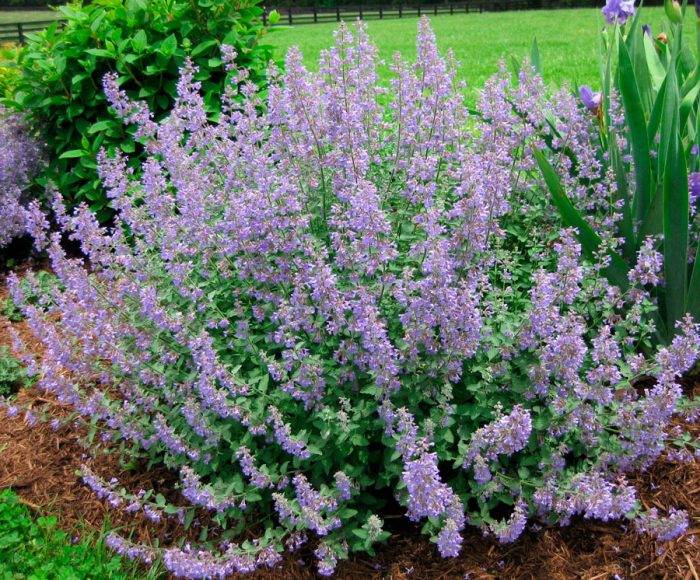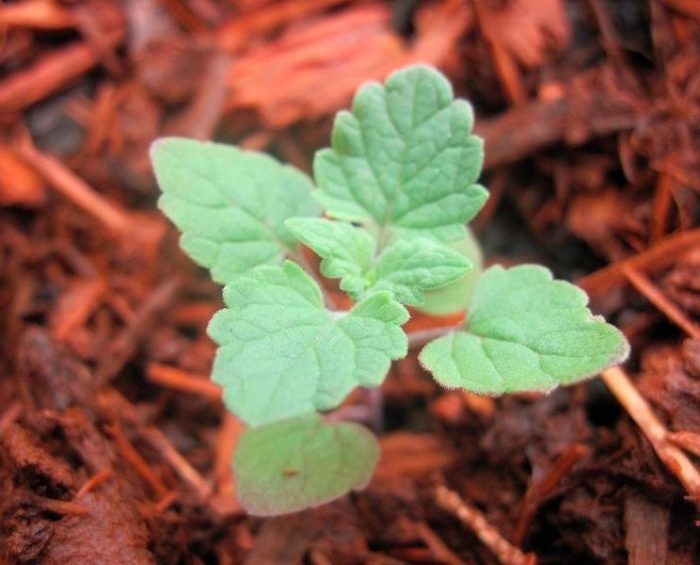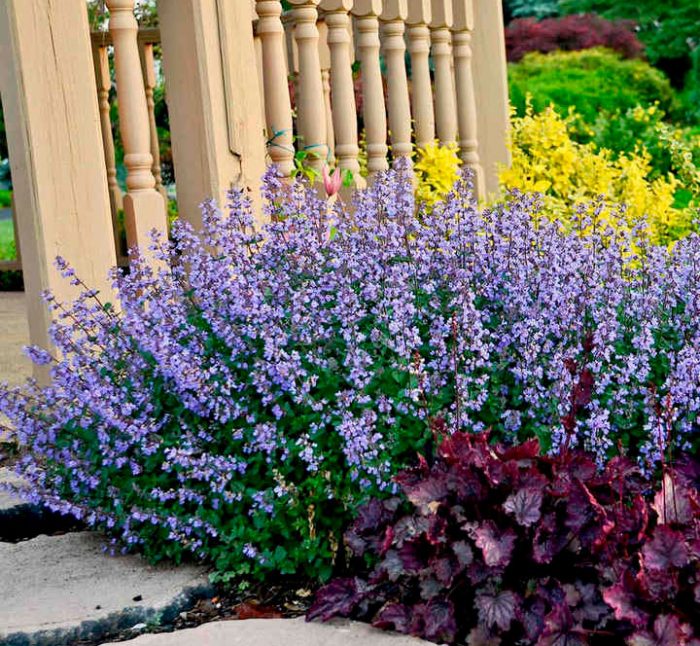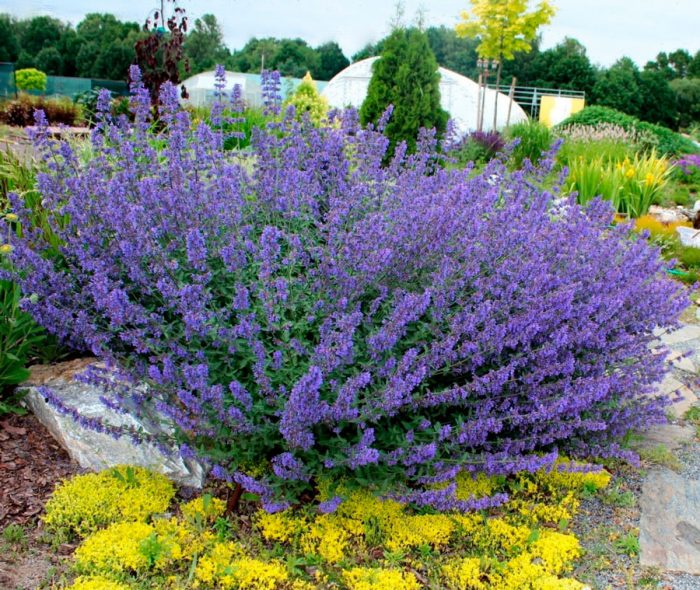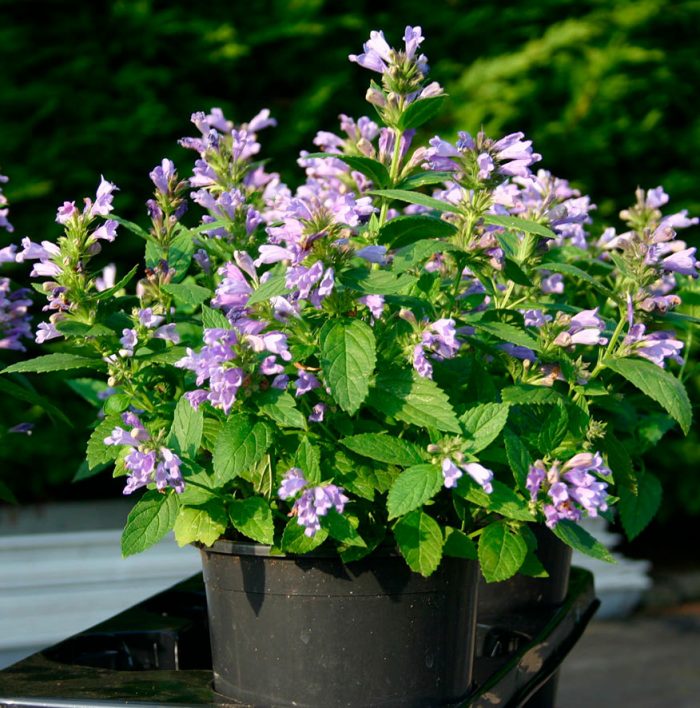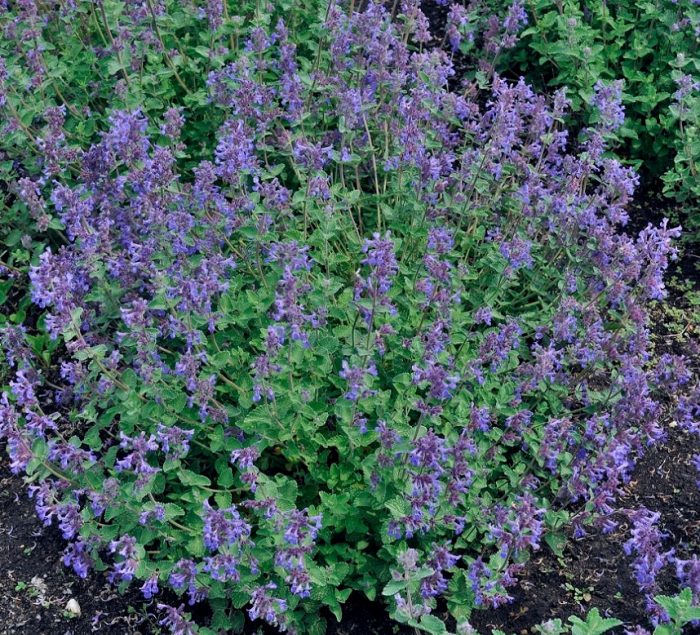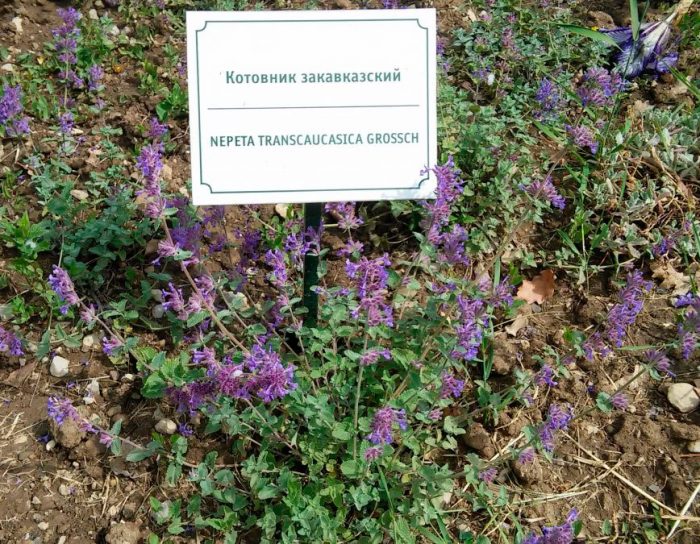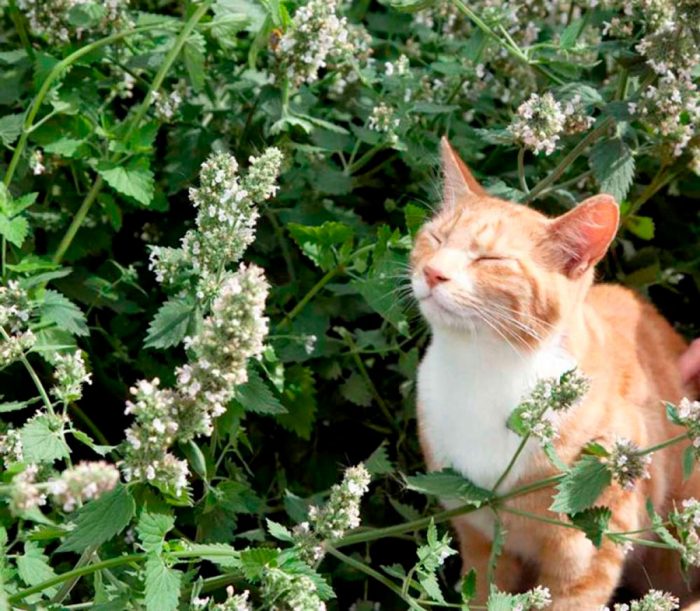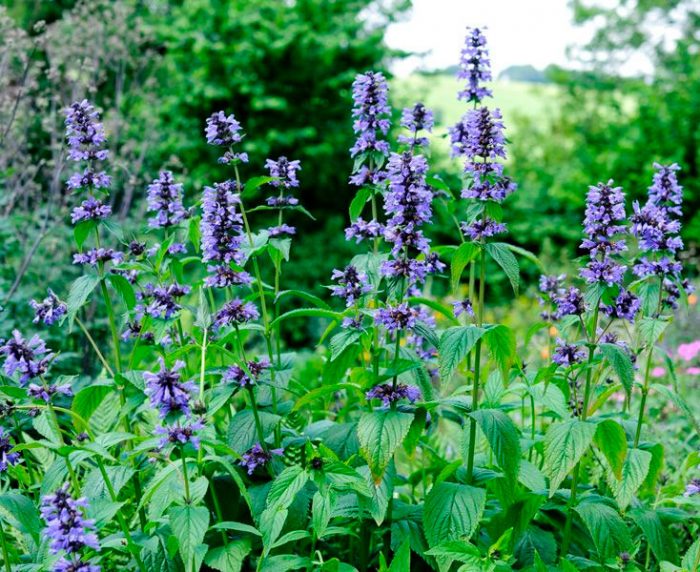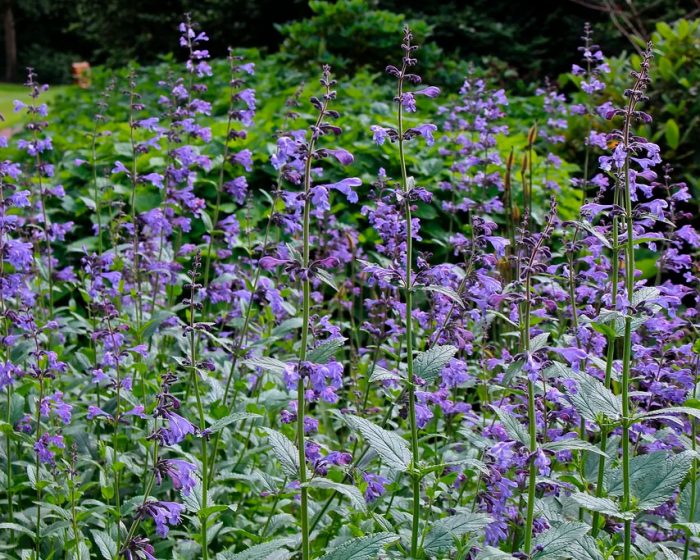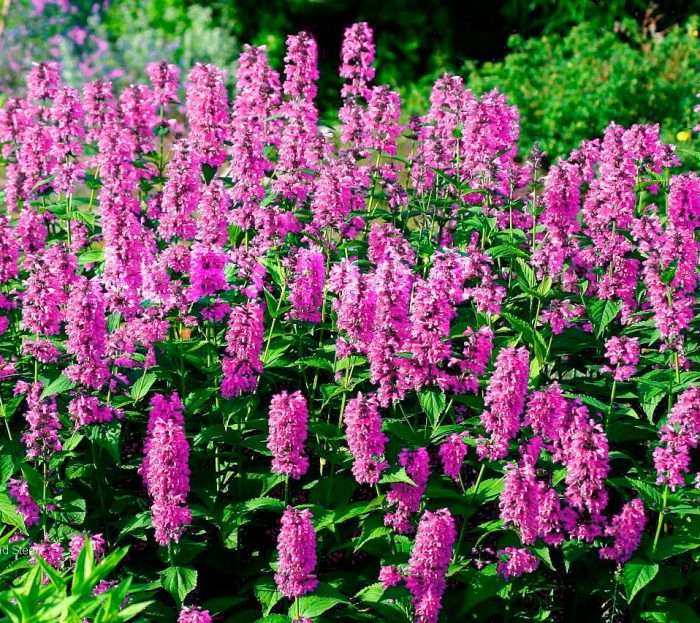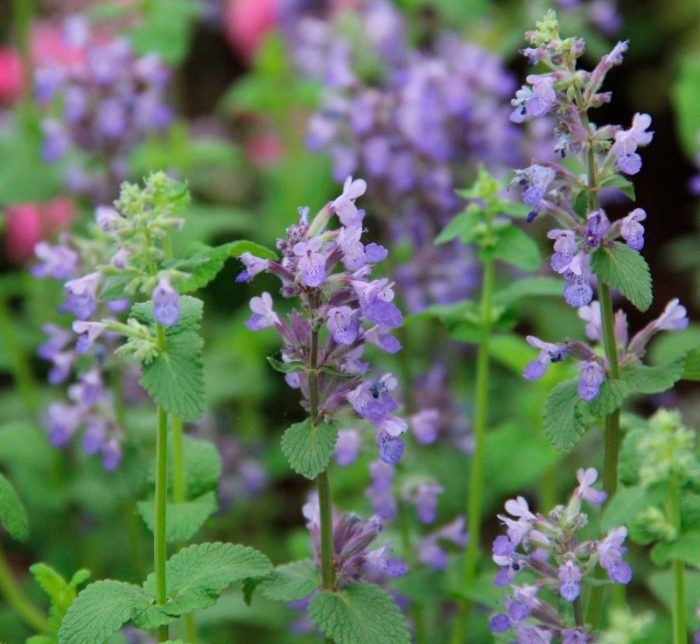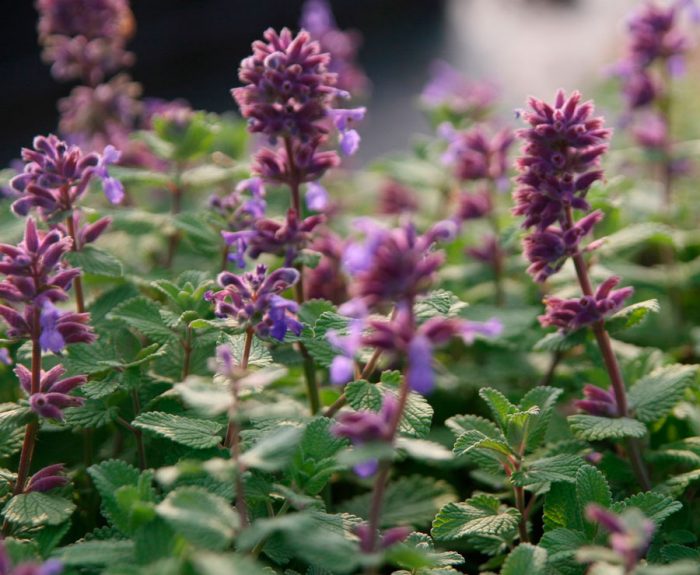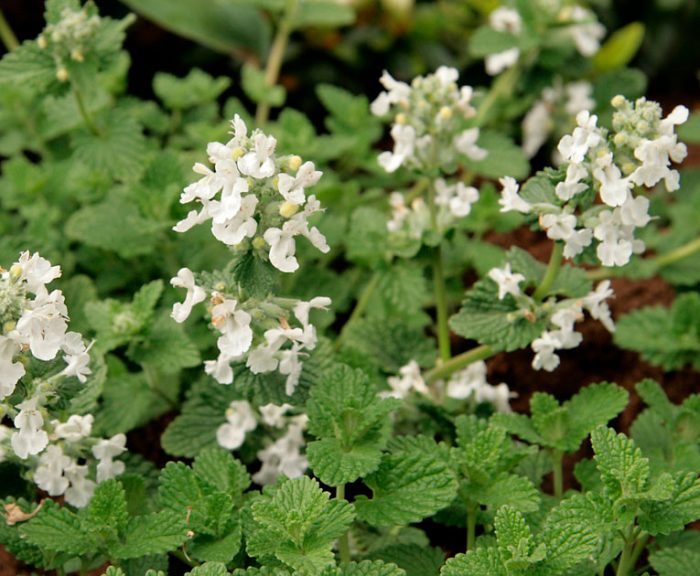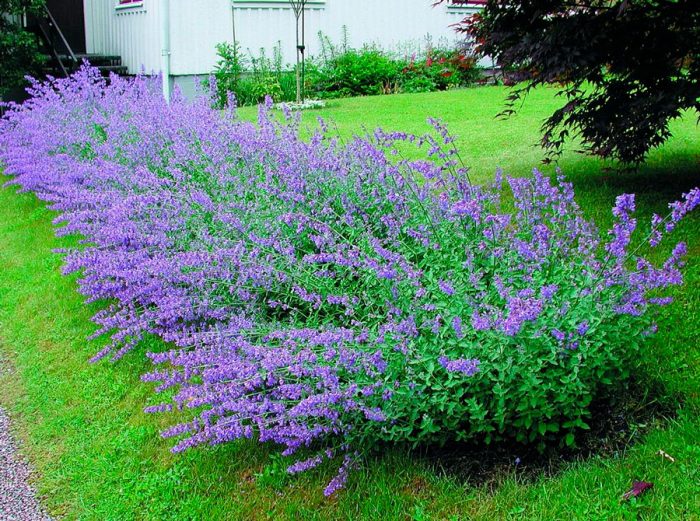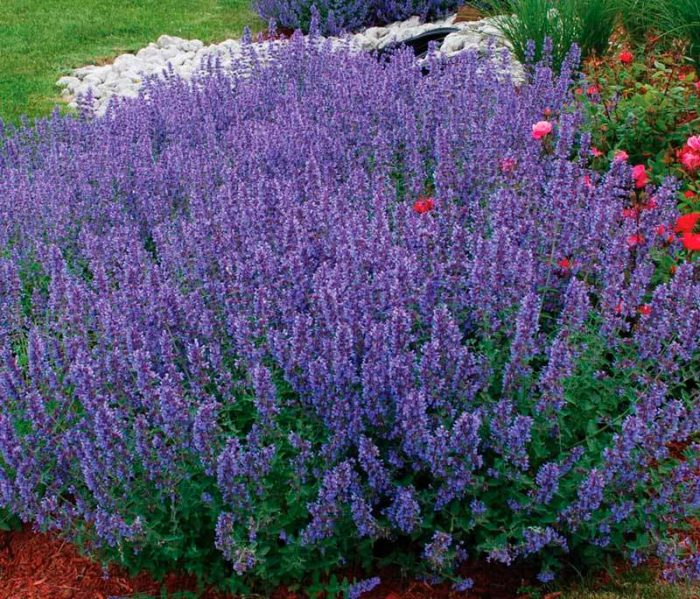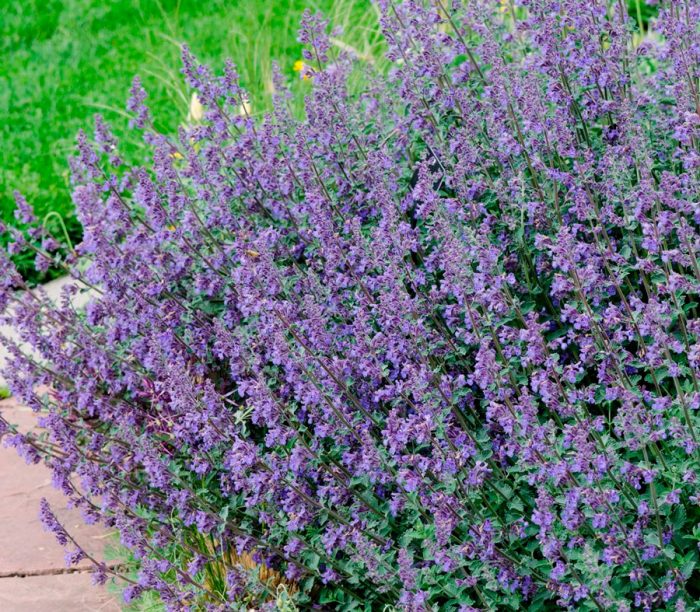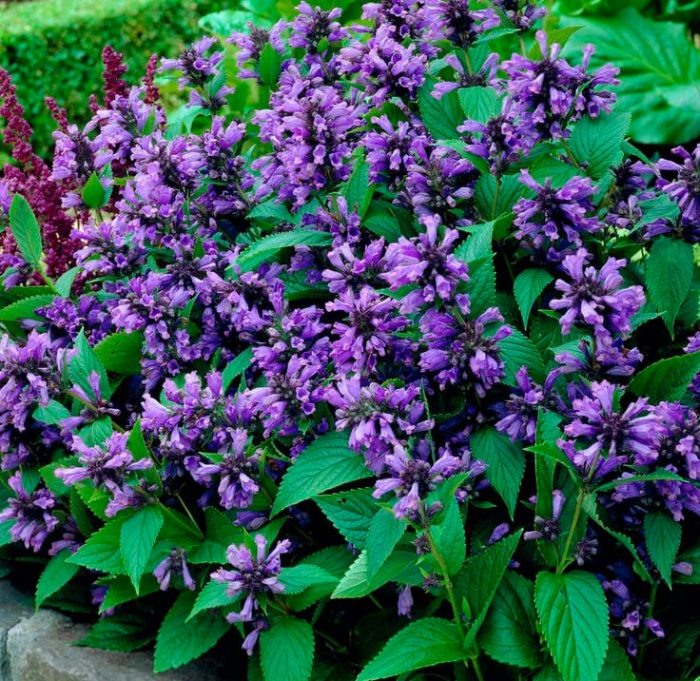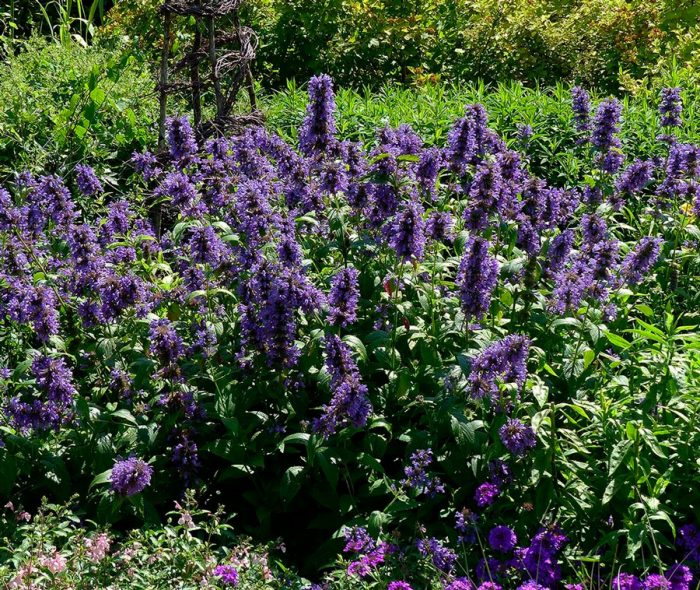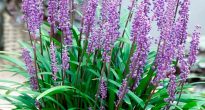The catnip plant was named so for a reason. The fact is that it has an unusual effect on cats, which leads to drug intoxication. However, despite this, every year, catnip is becoming more and more popular among gardeners. Moreover, they appreciate it not only for its high decorative effect, but also for its healing properties. They also grow catnip for household needs. It is distinguished by its unpretentiousness and undemanding growing conditions.
Catnip bushes adorn small flowers throughout the summer. Moreover, they are often planted on the border of paths and lawns, and they are also decorated with rock gardens and flower beds made of heather or roses.
Content
Catnip features
The catnip plant (Nepeta L.) is a member of the Lamiaceae family. This genus includes about 250 different species. In nature, catnip is found in the temperate latitudes of Europe (24 species) and Asia, and therefore it can be found on the territory of Russia. Catnip also grows in tropical mountainous areas in northern Africa. It is also found almost throughout the European part of Russia, in the Caucasus and Siberia. This perennial plant prefers to grow on stony, dry soil. The word "Nepeta" is directly related to the city of Nepeta, located in Italy (formerly Etruscan state). In this city, catnip grew literally at every step.
Catnip is a perennial plant, but there are also annual species. The height of the bush can vary from 100 to 120 centimeters. Opposite fragrant single leaf plates have a heart-shaped shape, while at the edge they have teeth.
The plant blooms in July. Its whorled inflorescences consist of small white and blue flowers. Bushes with yellow inflorescences are rare. The lower petals grow together to form a bell-shaped or funnel-shaped tube that ends in two lips. At the same time, there are a couple of spots on the upper lip. Each flower has four stamens, two of which are collected in bunches.The lower pair of stamens is slightly shorter than the upper one; however, none of them protrudes from the crown tube. In a flowering plant, flowers are collected in the upper part of the stem in a cone, while they retain their decorative effect until October. At the end of flowering, in place of the inflorescences, fruits are formed, which are nuts.
Mint and catnip are related plants. At the same time, the foliage of these plants smells almost the same. However, catnip releases special active volatile substances, which include a compound called nepetalactone. It is capable of influencing the behavior of cats through the respiratory tract.
Planting a catnip in open ground
When to plant
There is nothing difficult in planting a catnip in open ground. Bushes are planted in garden beds in the spring. However, flower pots and containers can also be used for this. If desired, this herbaceous plant can be grown from seeds, but often gardeners use ready-made seedlings for planting, they can be bought in a specialized store. A faster and easier way to grow a catnip is to plant ready-made seedlings. Moreover, they can be planted in open ground both at the beginning of the spring period and in the fall.
Optimal landing site
Catnip is not very demanding on growing conditions. However, it grows best in soil that is well water and air permeable. Bushes grow more fragrant on sandy soil. Also, when choosing a suitable place, special attention should be paid to lighting; if possible, it is better to choose the western or southern side of the building. The cattleman will also feel great on a quiet slope or in a herb garden, which should have reliable protection from the wind.
Remember that different species and varieties have different requirements for choosing the optimal planting site. For example:
- Varieties with gray foliage... A well-warmed sunny area is suitable for growing them, and the soil should be moisture and air permeable. At the same time, in nature, species of plants with gray leaves often grow on poor rocky soil, so they do not need frequent feeding and firmly endure a short drought.
- Varieties with green foliage... They grow best in moist, nutritious soil, but the area should not be overly damp. They prefer well-lit areas, but grow quite well in shaded areas. Such varieties are not recommended to be planted in well-heated areas, for example, on the south side of the house.
In order to improve the growth and development of the catnip during planting, it is recommended to add some dolomite flour or lime. When choosing a site for planting, it should also be taken into account that this herbaceous plant reproduces well by self-sowing.
Seeding rules
It is quite simple to grow a catnip from seeds, the main thing is to take into account some of the nuances:
- Since the seeds are very hard, immediately before sowing, they are placed in the freezer, where they must stay for one night.
- After the seed is removed from the freezer, it is poured into a container with water and left for one day. As a result of such preparation, it will be possible to destroy the protective layer of seeds, which will significantly accelerate their germination.
- Sowing seeds is carried out in a seedling box or in open ground.
- The first shoots should appear after 1–1.5 weeks. After they grow up a little, they are seated.
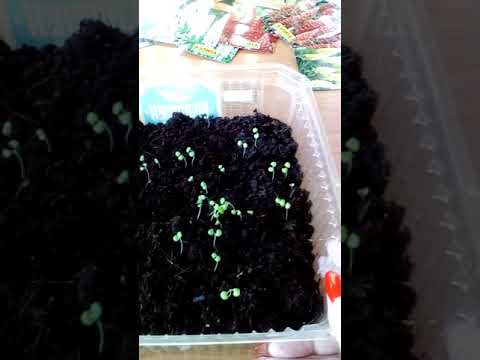

Watch this video on YouTube
Landing in open ground
The growth rate of a catnip directly depends on the species and variety. At the same time, in the most suitable conditions, the bushes can grow quite thick. Therefore, when planting bushes between them, a distance of 0.3–0.5 meters should be observed.
Typically 1 m2 the site can accommodate 3 to 8 catnip bushes.When planting in containers or pots, the bushes can be planted more densely, which will create a beautiful composition.
Step-by-step instructions for planting a catnip in the ground:
- remove all weeds from the site and dig up the soil;
- the roots of the seedlings should be immersed in a container of water so that they can be saturated with moisture, thanks to this they will hurt less and take root in a new place faster;
- make small holes in the prepared soil;
- plant the bushes in the holes to the depth at which they were in the container;
- cover the bushes with soil and make a small depression around them;
- Water the planted catnip well.
Catnip care
The cattleman does not require special care, so even an inexperienced gardener will be able to grow it in his garden plot.
How to water
A newly sown or planted catnip must be watered. It is then watered regularly for several weeks. While the bushes are young, it is recommended to water them once every few days. Adult bushes need additional moisture only during a prolonged drought, while watering should be abundant. Remember not to allow stagnation of liquid in the soil, as this can lead to the death of the flower.
Gray foliage varieties are highly drought tolerant. But still, if it has not rained for a long time, then it is better to water the bushes.
Top dressing
Such a herbaceous plant does not need additional feeding. If there are a lot of nutrients in the soil, then this will have an extremely negative effect on the growth of the bush. If the soil on the site is too poor, then compost mixed with soil can be added to it. Also, after the first wave of flowering and pruning, the bushes can be fed with complex fertilizer, thanks to which they will again delight with lush flowering.
Pruning
At the end of the first flowering, the stems are recommended to be cut. After a very short time, they will grow back, after which the second wave of flowering will begin. Some varieties can bloom until autumn.
Since this plant reproduces easily by self-sowing, timely pruning helps to prevent it. However, varieties belonging to the Fassen group do not form seeds.
It is recommended to collect the foliage a few days after rain or watering, since at this time it is the most fragrant.
Wintering
Faded bushes in autumn are shortened by 2/3 of the height. This will help them get through the winter better and activate the growth of the bush in width. Since the plant is relatively winter-hardy, it is recommended to cover it for the winter only in the coldest regions. The area is covered with spruce branches or covered with felt covers. Remove the shelter immediately after the frost has passed so that the plant does not rot.
Reproduction methods
The catnip grows like a weed and quickly invades new territories. Therefore, it is recommended to plant it in limited areas, for example: rockeries, fenced flower beds, flowerpots, etc.
Dividing the bush
The division of the bush can be carried out in autumn or in spring (from April to June). Remove a fully grown shrub from the soil that has two or three stems. Dip the earthen ball into the water, and when it is completely wet, start untangling the roots. In doing so, try not to injure them. Using a clean, sharp knife, divide the bush into parts, which are then planted in pre-prepared holes. Planted cuttings need regular watering for several weeks. This method of reproduction also helps to rejuvenate the shrub, the flowering of which becomes more scarce over the years. At the same time, the heavily overgrown bushes inside look dried up.
Cuttings
Cut the cuttings in the last weeks of spring or first summer. To do this, choose powerful stems from adult bushes, which do not yet have flowers. For rooting, they are planted in a well-drained soil mixture, they are provided with systematic watering and protected from direct sunlight. From above, the cuttings can be covered with a transparent cap, while they are arranged with regular ventilation and condensation is removed in time.The rooted segments are planted in individual containers. And with the onset of spring, they are transplanted into the garden.
Growing from seeds
For sowing seeds, small boxes are used, and it is carried out in the last days of August or the first days of September. For sowing, it is recommended to use substrates that include coconut, crushed bark or perlite. At a temperature of at least 18 degrees, seedlings will appear after 7-15 days.
Pests and diseases
If the summer period turned out to be dry and sultry, then the catnip may get sick with powdery mildew. Tear off all affected foliage and treat the plant with Nimrod 25 WP or Bayleton 5 WP fungicide. As a preventive measure, cover the soil surface in the area with mulch and during watering, do not allow water to get on the foliage.
Sometimes ticks and whiteflies settle on the bushes, you can get rid of them with the help of acaricidal and insecticidal agents.
The plant can be severely damaged by cats that love its smell. That is why it is not recommended to plant a catnip next to valuable garden crops.


Watch this video on YouTube
Types and varieties of catnip with photos and names
Experts know about 251 species of catnip. Some of the species are cultivated as ornamental plants, and Fassen's catnip (Faassena N. × faasenii), which is decorated with fragrant foliage and light purple inflorescences, is especially popular. In this case, catnip or catnip (N. Cataria) is used to prepare infusions that have a psychedelic effect and are used in herbal medicine. Some species contain the substance nepetalactone, which has an unusual effect on cats, injecting them into euphoria. At the same time, animals often destroy catnip bushes themselves.
Species found on the territory of Russia
The following types of catnip are found on the territory of Russia:
Catnip Mussini, or Musina (Nepeta mussinii Spreng.ex Henckel)
The size of the bush is 45x60 centimeters, it is decorated with violet-blue inflorescences and fragrant leaves that do not contain nepetalactone.
Transcaucasian Catnip (Nepeta transcaucasica)
Catnip Hungarian (naked) (Nepeta pannonica L. syn.N. nuda L.)
It grows in Ukraine, Asia, Belarus and southern Russia. The surface of the erect stem is glabrous or slightly pubescent. In diameter, it reaches from 0.3 to 0.5 cm, and its height can vary from 0.5 to 1.2 m. The bushes bloom in July and fade in September. All this time, they are decorated with purple inflorescences. The species prefers to grow on roadsides and on dry slopes.
Large-flowered catnip (Nepeta grandiflora M. Bieb.)
The height of the bush is about 0.7 m. Its flowers are large bluish-lilac.
Catnip (Nepeta cataria L.)
The size of the bush is 100x60 centimeters. Fragrant greens grow on it, and during flowering, pinkish or purple-white inflorescences are formed. The foliage of the Citriodora variety smells pleasantly of citrus.
K. kuban (Nepeta kubanica)
This species grows in the southern regions. The bush reaches a height of 0.5 to 0.7 m, while its flowering is observed from June to September.
Siberian catnip (Nepeta sibirica)
The bush is decorated with stocky foliage and dense lavender inflorescences. The size of the bush is 40x60 centimeters. The variety "Blue Beauty" differs from the main type in blue inflorescences.
Catnip (Nepeta nervosa)
The size of a bush of such a low-growing species is 30x30 centimeters. It has fragrant foliage and blue buds.
In addition, gardeners are interested in such species as: Italian catnip (Nepeta italica), semi-seated catnip (Nepeta subsessilis), Isfahan catnip (Nepeta ispahanica) and Ukrainian catnip (Nepeta ucranica).
Low-growing species with gray foliage
The most widespread in culture are drought-resistant perennial species with gray foliage. They grow well in lighted, warm areas in well-drained loose soil. Bushes in height reach only 20 to 30 centimeters, but they grow strongly in breadth and are able to form a dense carpet.That is why such types are used for decorative framing of flower beds, the base of a statue or a fountain. Their stems are intertwined with shoots of other horticultural crops. Thanks to this, for example, the catnip will be able to decorate a flower bed with irises when they fade. The catnip (Nepeta racemosa) is especially good at this task.
The best varieties:
Variety "Superba"
Experienced gardeners recommend paying attention to this variety, which was created in 1804. This plant belongs to the most effective and powerful low-growing varieties. Flowering lasts from the last days of April to the first days of July. At this time, many bluish-lilac inflorescences are formed on the bushes. With timely pruning, the bushes will decorate the inflorescences until autumn.
Variety "Grog" (Grog)
It is similar to the Superba variety. This plant differs from other varieties with its pronounced characteristic aroma of mint and fresh lemon.
Variety "Odeur Citron"
Its foliage smells like lemon.
Variety "Snowflake"
This plant is decorated with white inflorescences, which is very rare for catnip.
Tall species and varieties with gray foliage
In landscape design, species such as large-flowered catnip and Fassena are especially popular. These are fast-growing species, the height of the bushes in which is about 0.6 m.
Fassena's cattle (Faassena) - this perennial can reach a height of about half a meter. The stems are covered with a silvery green heart-shaped foliage. Flowering occurs in May – October. Inflorescences are colored violet-blue. Absolutely all parts of the bush are fragrant, but foliage exudes the strongest aroma. A well-lit area is best suited for growing this species, while the soil should be air and water permeable, as well as saturated with nutrients. Short droughts are not terrible for such a plant. However, during a long dry period, it is imperative to water the bushes. Strong-growing varieties need a garter to support. At the end of the first flowering, it is recommended to prune the catnip, thanks to which it will bloom again. Formative pruning also has a positive effect on catnip breeding. This species is a valuable honey plant, and therefore it attracts pollinating insects to the site. It also repels some insects (such as mosquitoes and flies).
Popular varieties of Fassen catnip:
Catnip
Flowering in this variety comes much later than in others, while its branching shoots are decorated with delicate foliage;
Hills giant
The bushes of this English variety can reach a height of about a meter, inflorescences of a dark color are formed on them;
Walkers low
Inflorescences are dark purple in color.
The best varieties of large-flowered catnip:
Six hills giant
His inflorescences are bluish-purple, they look great together with purple geraniums or roses.
Dawn to dusk
The flowers are pink.
"Gletschereis". This variety differs from the rest with its delicate silvery-blue color of flowers. Due to its small foliage, this plant is excellently combined with other crops with gray leaf plates.
In nature, the large-flowered catnip can be found in the Caucasus and Eastern Europe. Despite the name of this species, its flowers can hardly be called large. The stems can reach a height of about 1.2 meters. Strong-growing decorative herbaceous plants and roses look great next to such a catnip.
The most popular among gardeners are varieties of large-flowered catnip, such as:
- "Pool Bank" and "Wild Cat" - violet-blue inflorescences;
- "Blue Danube" - has compact bushes;
- "Dawn to Dusk" - pinkish inflorescences.
Species with green foliage
There are also types of catnip with green foliage that grow best in shaded areas. In order for such a flower to grow normally and develop correctly, it is necessary to choose a place for planting more carefully for it.
Types with green leaves:
Semi-seated catnip (Nepeta subsessilis)
The homeland of this plant is Japan, and it differs from other species in very large flowers. This shade-loving plant is recommended to be grown next to large-leaved brunner, lamb, hostas, geraniums or Canadian phlox.
Siberian catnip (Nepeta sibirica)
When planted in nutritious soil, forms powerful shoots. However, for good growth, it is necessary that other garden crops grow next to it, forming dense bushes. Compared to the species plant, the Souvenir d'André Chaudron variety is more durable, it looks great next to daylilies and roses.
Kuban cattle (Nepeta kubanica) and Nepeta pratti
These species are the most widespread in culture. During flowering, the bushes are decorated with lush inflorescences, consisting of large flowers. Such catnipts look great on flower beds next to a large astrantia (Astrantia major) or a three-fold cream bell (Campanula lactiflora).
Application
Catnip is used not only as an ornamental plant, but also as a honey plant, in herbal medicine and on the farm.
In landscape design, honey plant
Often, catnip is planted in rock gardens and gardens in the English style, and they are also framed by lawns. It is also planted in poorly treated, uneven areas where it can replace a lawn. It is also used to decorate steep slopes.
Catnip is also used to attract butterflies and bees to the site. It is recommended to plant it next to the apiary, as it is an excellent honey plant (from one hectare from 150 to 200 kg of honey).
In cooking
Young stems of such a plant are placed in sauces, soups or vegetable salads. Chopped dried foliage is added to meat dishes. Not so long ago, catnip leaf tea, which is very high in vitamin C, was very popular.
Foliage and stems are collected after flowering. They are collected in bunches and hung in a well-ventilated, dry place, protected from direct sunlight.
Healing properties
Dried catnip flowers are used in herbal medicine for the preparation of tincture or tea. This plant has several beneficial properties:
- improves the functioning of the digestive system, is often used for flatulence;
- used for upper respiratory tract infections to thin phlegm;
- tonic and diaphoretic effect.
To get a healing tea, just fill the raw materials with freshly boiled water and let the mixture brew.
On the farm
The catnip hood is used by summer residents to destroy aphids, and also to scare off cockroaches, mosquitoes and termites. The smell of catnip scares away rats.
Effects on cats and flies
About 2/3 of all cats are susceptible to catnip scent. Moreover, this feature is inherited. Animals are attracted to the substance nepetalactone. A cat can lie in the bushes for ten minutes, lick them and meow loudly, after which she loses interest in him for about a couple of hours. Kittens only begin to show interest in him at the age of 5 or 6 months. At the same time, old cats are practically not interested in catnip.
The cattleman is able to scare off house flies, as well as the autumn fly (Stomoxys calcitrans) and cockroaches.


Watch this video on YouTube

